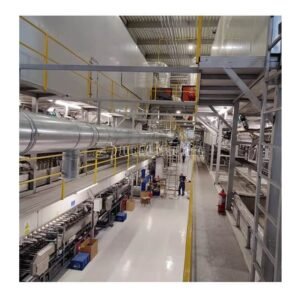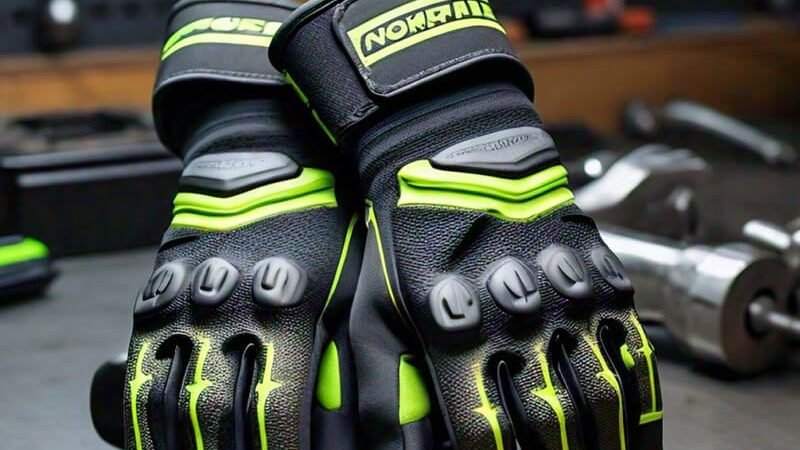What Are Mechanical Gloves? A Comprehensive Guide to Hand Protection Technology
Table of Contents
- Introduction to Mechanical Gloves
- Types of Mechanical Gloves
- Key Features and Technologies
- Applications and Industries
- Choosing the Right Mechanical Gloves
- Safety Standards and Certifications
- Future Trends in Mechanical Glove Technology
- Conclusion
Introduction to Mechanical Gloves
Mechanical gloves represent a specialized category of personal protective equipment (PPE) designed to safeguard workers’ hands from various mechanical hazards in industrial and commercial environments. These advanced hand protection solutions combine cutting-edge materials with ergonomic design to provide comprehensive protection against cuts, punctures, abrasions, impacts, and other workplace dangers.
Unlike standard work gloves, mechanical gloves are engineered with specific performance characteristics that meet rigorous safety standards. They serve as the critical barrier between workers’ hands and potentially harmful mechanical forces, chemicals, extreme temperatures, and sharp objects encountered in modern industrial operations.
The evolution of mechanical gloves has been driven by the increasing complexity of workplace hazards and the growing emphasis on worker safety across industries. Today’s mechanical gloves incorporate advanced synthetic materials, innovative weaving techniques, and specialized coatings to deliver superior protection without compromising dexterity or comfort.
Types of Mechanical Gloves
Cut-Resistant Gloves
Cut-resistant gloves are designed to protect against sharp edges, blades, and cutting tools commonly found in manufacturing, food processing, and glass handling operations. These gloves utilize high-performance fibers such as ultra-high molecular weight polyethylene (UHMWPE), aramid fibers, and steel wire to create a protective barrier against cuts and lacerations.
Modern cut-resistant gloves are rated according to ANSI/ISEA standards, with protection levels ranging from A1 (lowest) to A9 (highest). The rating system helps users select appropriate protection based on the specific cutting hazards present in their work environment. Advanced cut-resistant gloves may also incorporate additional features such as puncture resistance and enhanced grip capabilities.
Impact-Resistant Gloves
Impact-resistant gloves provide protection against blunt force trauma, vibration, and crushing injuries that can occur in heavy industrial applications. These gloves feature specialized padding systems, typically incorporating thermoplastic rubber (TPR) or similar materials strategically placed over knuckles, fingers, and the back of the hand.
The protective elements in impact-resistant gloves are designed to absorb and distribute impact energy, reducing the risk of fractures, bruises, and other blunt force injuries. Many models combine impact resistance with other protective features, creating multi-hazard gloves suitable for complex work environments.

Heat-Resistant Gloves
Heat-resistant mechanical gloves protect workers from thermal hazards including high temperatures, hot surfaces, and radiant heat. These gloves employ specialized materials such as aramid fibers, aluminized fabrics, and heat-resistant synthetic polymers to provide thermal protection while maintaining flexibility and dexterity.
Different heat-resistant gloves are designed for specific temperature ranges and exposure durations. Some models provide protection against contact heat up to 500°F (260°C) or higher, while others focus on protecting against radiant heat or molten metal splash. The selection depends on the specific thermal hazards present in the workplace.
Chemical-Resistant Gloves
Chemical-resistant mechanical gloves offer protection against various chemicals, oils, solvents, and other hazardous substances while maintaining mechanical protection properties. These gloves typically feature specialized coatings or are constructed from chemically resistant materials such as nitrile, neoprene, or fluoropolymers.
The effectiveness of chemical-resistant gloves depends on factors such as chemical compatibility, breakthrough time, and permeation rate. Proper selection requires understanding the specific chemicals encountered and their interaction with different glove materials to ensure adequate protection.
Key Features and Technologies
Material Composition
Modern mechanical gloves incorporate a diverse range of advanced materials, each selected for specific protective properties. High-performance synthetic fibers like UHMWPE and para-aramid provide excellent cut resistance while maintaining flexibility. Steel wire reinforcement offers maximum cut protection but may reduce dexterity.
Natural and synthetic rubbers are commonly used for coatings and palm treatments, providing enhanced grip and chemical resistance. Advanced polymer technologies have led to the development of specialized coatings that maintain grip performance in wet, oily, or dusty conditions while providing additional protection against specific hazards.
Protection Levels
Mechanical gloves are classified according to various protection level systems, with the most common being the ANSI/ISEA 105 standard for cut resistance and the EN 388 European standard for mechanical risks. These classification systems provide objective measures of glove performance across different hazard types.
The ANSI cut resistance levels range from A1 to A9, with each level representing increasing protection against cutting hazards. Similarly, puncture resistance, abrasion resistance, and tear resistance are evaluated and rated to help users select appropriate protection for their specific applications.
Grip Enhancement
Grip performance is crucial for mechanical gloves, as workers must maintain control of tools and materials while wearing protection. Modern gloves employ various grip enhancement technologies, including textured surfaces, specialized coatings, and ergonomic palm patterns.
Advanced grip coatings such as nitrile foam, polyurethane, and latex provide excellent dry and wet grip performance. Some gloves feature dual-layer coating systems that combine different materials to optimize grip in specific conditions while maintaining durability and protection.
Applications and Industries
Manufacturing and Assembly
In manufacturing environments, mechanical gloves protect workers from sharp components, rough surfaces, and mechanical hazards associated with assembly operations. These applications often require gloves that balance protection with fine motor control, allowing workers to handle small parts and operate precision equipment effectively.
Assembly line workers benefit from gloves that provide cut resistance while maintaining tactile sensitivity for quality control tasks. Many manufacturing applications also require gloves with anti-static properties to protect sensitive electronic components from electrostatic discharge.
Construction and Heavy Industry
Construction and heavy industrial applications present complex hazard profiles requiring multi-functional protection. Workers encounter sharp materials, heavy objects, rough surfaces, and potential impact hazards that demand comprehensive hand protection solutions.
Mechanical gloves for these industries often combine cut resistance, impact protection, and enhanced durability to withstand harsh working conditions. Weather resistance and extended wear comfort are also important considerations for outdoor construction applications.
Automotive Industry
The automotive industry presents unique challenges for hand protection, including exposure to sharp metal edges, chemicals, oils, and precision assembly requirements. Mechanical gloves for automotive applications must provide protection while allowing workers to perform detailed tasks such as electrical connections and component installation.
Many automotive applications require gloves with chemical resistance properties to protect against coolants, lubricants, and cleaning solvents commonly used in vehicle manufacturing and maintenance operations.
Food Processing
Food processing operations require mechanical gloves that combine cut protection with food safety compliance. These gloves must protect workers from sharp knives and processing equipment while meeting strict hygiene standards and regulatory requirements.
Food-grade mechanical gloves often feature antimicrobial treatments and are designed for easy cleaning and sanitization. Color-coding systems help prevent cross-contamination, and some models include metal-detectable components for food safety protocols.
Choosing the Right Mechanical Gloves
Assessment Criteria
Selecting appropriate mechanical gloves requires a comprehensive hazard assessment that identifies all potential risks in the work environment. This assessment should consider the types of materials handled, tools used, chemical exposures, temperature conditions, and duration of wear.
The assessment process should also evaluate the required level of dexterity, as different applications may prioritize protection over fine motor control or vice versa. Understanding these trade-offs is essential for selecting gloves that provide adequate protection without hindering productivity.
Sizing and Fit
Proper sizing and fit are critical for both protection and performance. Ill-fitting gloves can reduce protection effectiveness, increase fatigue, and create safety hazards. Most manufacturers provide detailed sizing charts and may offer multiple width options to accommodate different hand shapes.
Professional fitting services and trial programs can help organizations identify the best glove options for their workforce. Some manufacturers offer custom sizing services for specialized applications or when standard sizes don’t provide optimal fit.
Maintenance and Care
Proper maintenance extends glove life and ensures continued protection effectiveness. This includes regular inspection for damage, appropriate cleaning procedures, and proper storage conditions. Some mechanical gloves are designed for single-use applications, while others can be cleaned and reused multiple times.
Maintenance procedures should be tailored to the specific glove materials and workplace conditions. Detailed care instructions from manufacturers should be followed to maintain protection properties and avoid premature degradation.
Safety Standards and Certifications
Mechanical gloves must comply with various safety standards and regulations depending on their intended use and geographic market. In the United States, the ANSI/ISEA 105 standard governs cut-resistant gloves, while OSHA regulations mandate appropriate PPE selection and use.
European markets follow EN 388 standards for mechanical risks, which evaluate abrasion, blade cut, tear, and puncture resistance. Other international standards such as AS/NZS 2161 in Australia and New Zealand provide additional frameworks for glove performance evaluation.
Third-party testing and certification ensure that gloves meet stated performance claims and provide reliable protection. Independent testing laboratories verify protection levels and help manufacturers maintain consistent quality standards.
Future Trends in Mechanical Glove Technology
The mechanical glove industry continues to evolve with advances in materials science, manufacturing techniques, and workplace safety requirements. Smart glove technologies incorporating sensors and connectivity features are emerging to provide real-time safety monitoring and performance data.
Sustainable materials and manufacturing processes are becoming increasingly important as organizations focus on environmental responsibility. Biodegradable and recyclable glove options are being developed to reduce environmental impact while maintaining protection performance.
Customization and additive manufacturing technologies may enable more personalized protection solutions, allowing gloves to be tailored to individual users and specific application requirements. These advances could significantly improve both protection effectiveness and worker comfort.

Conclusion
Mechanical gloves represent a critical component of modern workplace safety programs, providing essential protection against a wide range of mechanical hazards. The continued evolution of materials, technologies, and standards ensures that workers have access to increasingly effective and comfortable protection options.
Proper selection, fitting, and maintenance of mechanical gloves require careful consideration of workplace hazards, performance requirements, and regulatory compliance. Organizations that invest in comprehensive hand protection programs demonstrate their commitment to worker safety while potentially reducing injury-related costs and improving productivity.
As workplace hazards continue to evolve and safety expectations increase, mechanical gloves will undoubtedly continue to advance, incorporating new technologies and materials to provide even better protection for workers across all industries.
Looking to manufacture high-quality mechanical gloves? Our state-of-the-art glove production equipment delivers precision, efficiency, and reliability for all types of protective hand wear manufacturing. From cut-resistant to heat-resistant gloves, our machinery ensures consistent quality and meets the highest industry standards.
